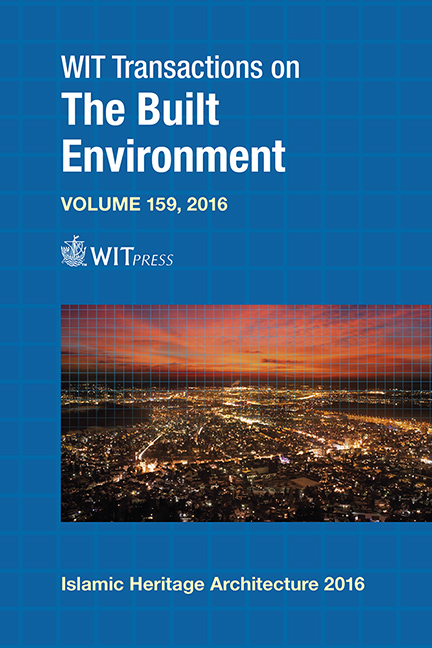Spatial Geometry In Islamic Art And Architecture
Price
Free (open access)
Transaction
Volume
159
Pages
12
Page Range
73 - 84
Published
2016
Size
2,427 kb
Paper DOI
10.2495/IHA160071
Copyright
WIT Press
Author(s)
R. Latif, G. Haider
Abstract
The architects and artists of Muslim history are known for excellence in planar and spatial geometry. We find the application of geometry on tiles and surface patterns and also spatially in architectural construction; the use of geometry is apparent in the arches, domes, and muqarnas, etc. But the use of geometry in the Islamic world is very different from the application of geometry in the western world. The reason for this difference is that grids are not repeated and a linear space is not constructed. A monumental frontal flat space is constructed that prevents the eye from moving into the space unlike the perspective space approached after crossing the structured facade of the Renaissance Church that facilitates the eye to continue inwards. European perspective is geometrically constructed but we don’t find any evidence in Islamic work in search of similar devices to represent “real” space.
The purpose of this paper is to identify theoretical aspirations and practical tools in the making of and representation of Islamic architectural space. Certain ideas about perception of architectural space are important to this study; these include implied depth and geometry in pictorial depiction and its implications in architecture. There are several categories in which art can be subdivided including two-dimensional and three-dimensional art like relief and sculpture. In the context of art, to make a clear comparison we will reduce our investigations to two-dimensional art where there is a pictorial depiction of some kind. In traditional cultures two-dimensional art or pictorial imagery often implies a three-dimensional experience depicted on a flat surface. In order to clearly illustrate how space in Islamic architecture is different, we will compare and contrast examples from Islamic Persia and European Renaissance within the period of the 15th–16th century.
Keywords
space, miniature, renaissance, art, architecture, Persia, perspective, shallow space, cross-cultural




